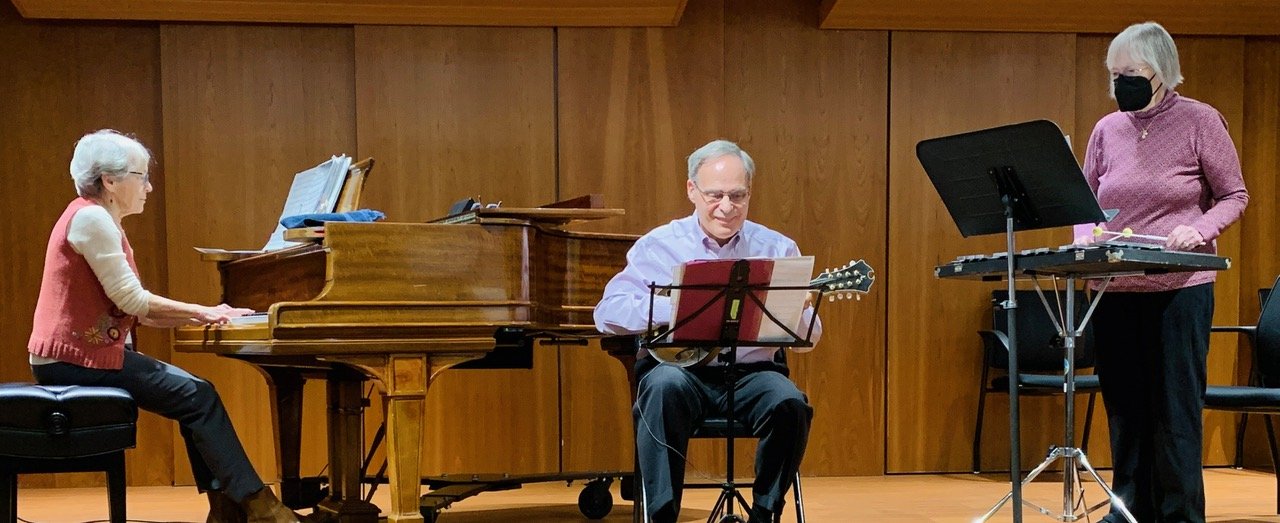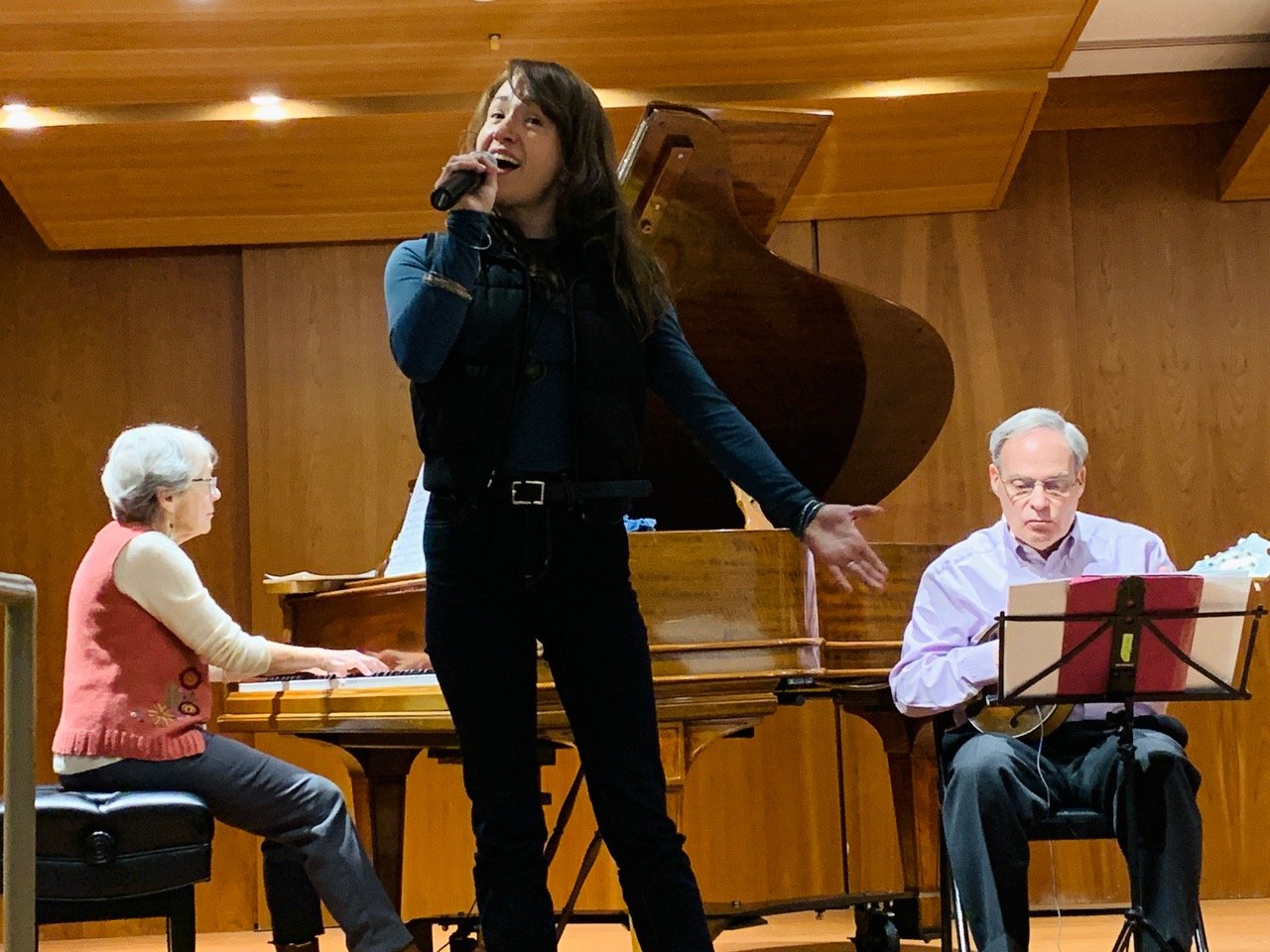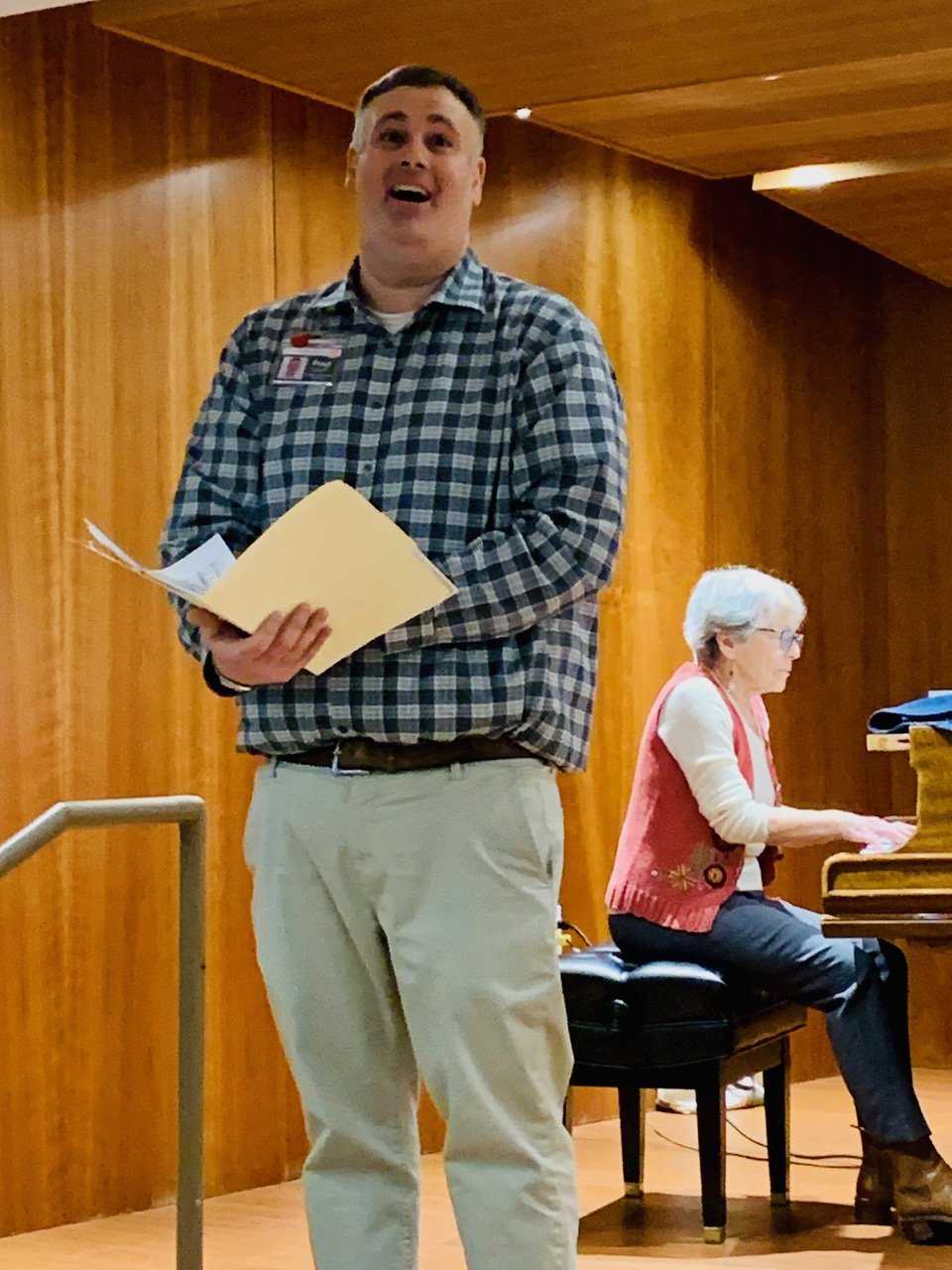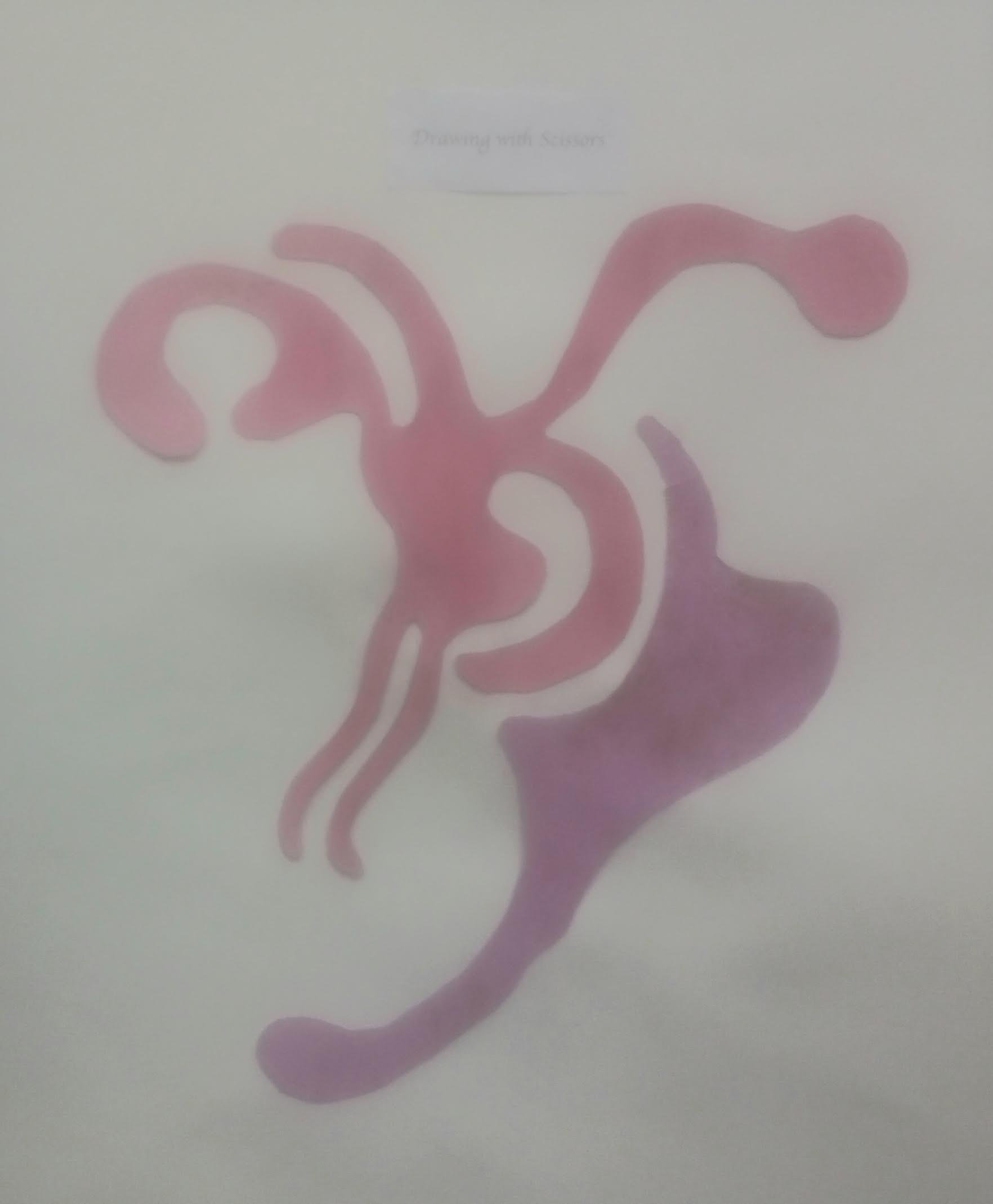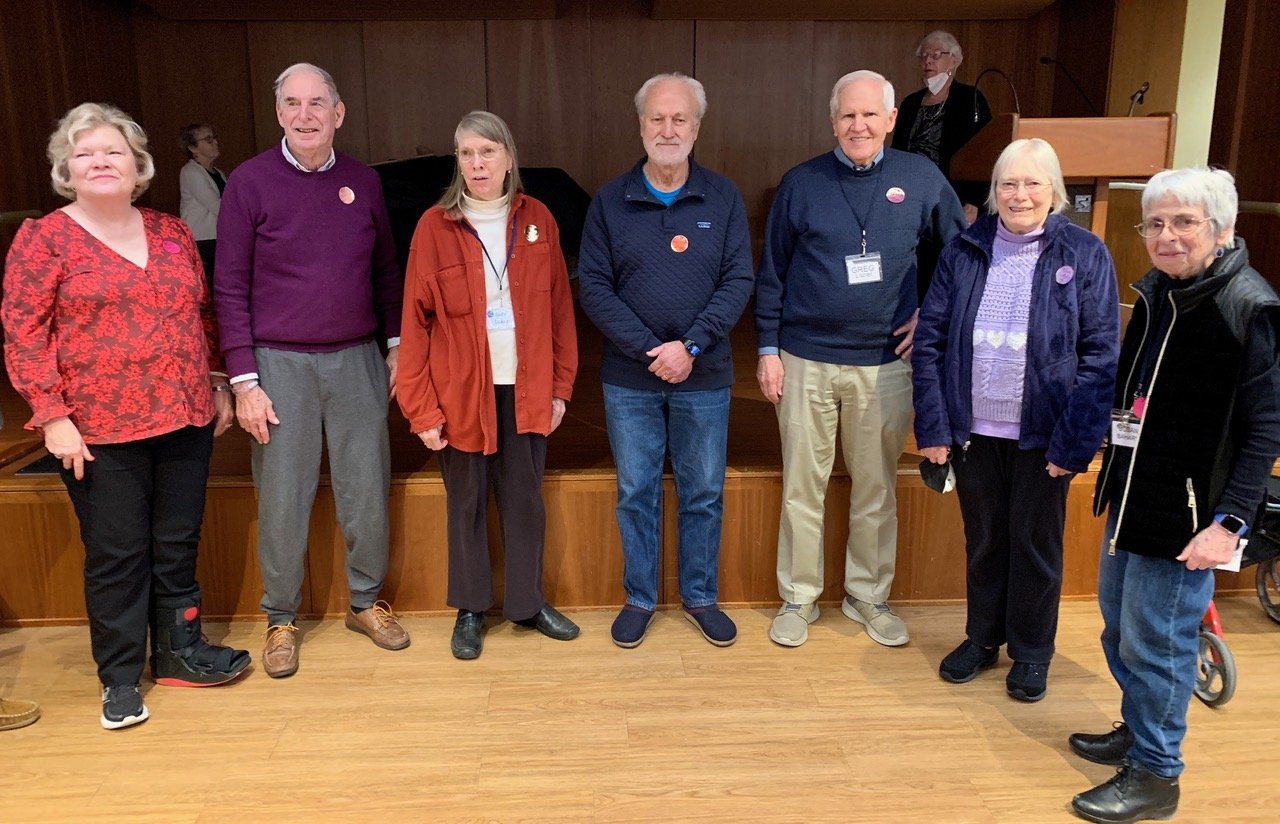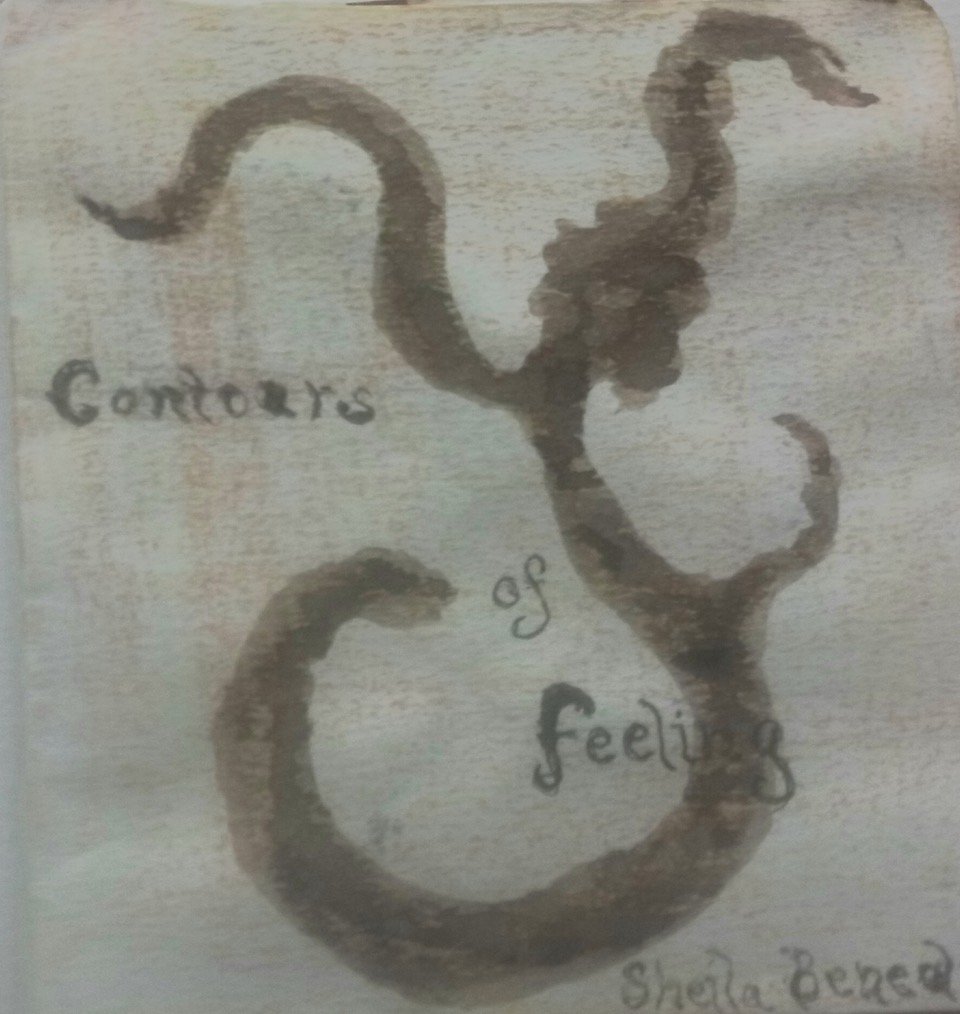Friday, February 21, was a day to stretch those vocal cords and relive the folks songs we all knew by heart back in the day. Donna Nye and her guitar led the standing-room-only Bistro Lounge song fest.
Photo by Martin Smolin
But wait (as the late-night advertisers used to say), that’s not all! Quick on after the sing-along, Sip and Snackers reveled in love songs—in honor of Valentine’s Day, a week past—led by Linda Mahoney, Donn Williams, and Ginny Bender, with special guests stars Emily (Linda’s talented daughter) and Fred Coppola (who knew he had such pipes?).
Photo by Harry Bloomfeld
Photo by Harry Bloomfeld
Photo by Harry Bloomfeld
Photo by Harry Bloomfeld
And for those who missed the day, a short clip of Fred leading On the Street Where You Live (make sure your volume is up):


